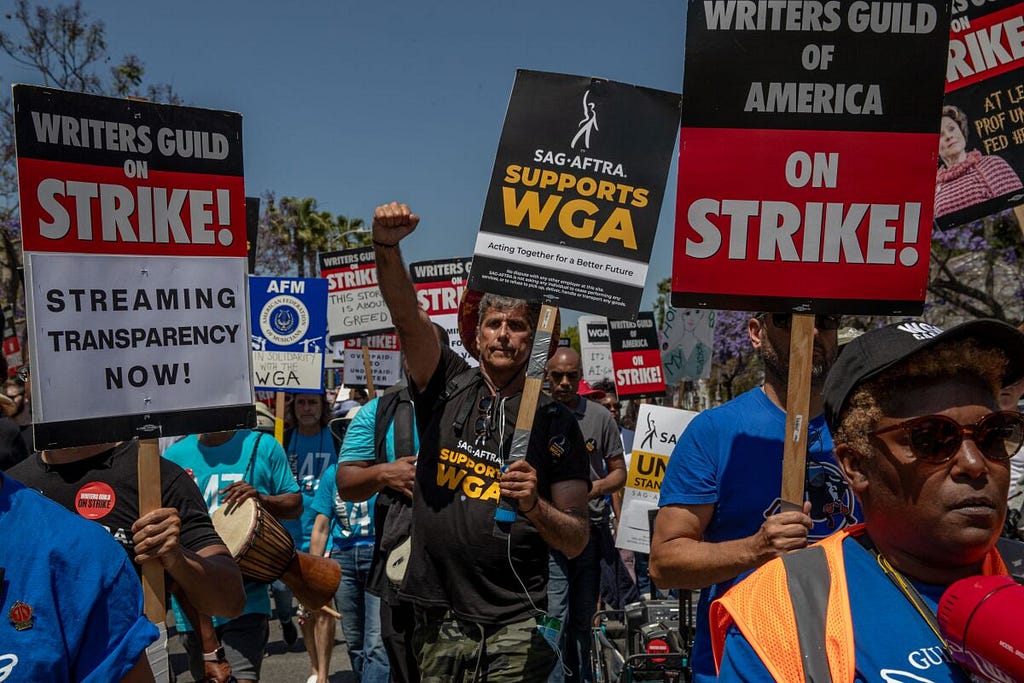How did we get here?

Via the Los Angeles Times:
The year was 1960. An actor named Ronald Reagan was president of the Screen Actors Guild, which was at the time fired up about residuals over films licensed to or sold to TV.
The result was a strike that lasted March 7 to April 18 and halted movies starring such luminaries as Elizabeth Taylor, Jack Lemmon and Marilyn Monroe.
Actors joined the industry’s writers, who had already been on strike since January of that year. The writers’ strike was long — their dispute lasted 148 days — and centered on income that screenwriters would get from movies airing on television and other issues.
Sixty-three years later, Hollywood is once again in the midst of a historic labor battle in which studios are facing a possible strike on two fronts in a protracted battle over new forms of distribution.
SAG-AFTRA members have authorized their leaders to call a strike if they can’t reach a deal with the major studios by Wednesday night, when their extended contract officially expires. They would join members of the Writers Guild of America, who have been on strike since May 2, broadening a labor conflict that has already disrupted film and TV productions nationwide.
How did such an extraordinary standoff come about? Historians and labor experts cite several explanations, including greater cohesion among Hollywood unions, a nationwide rise in labor activism after the COVID-19 pandemic and, perhaps most important, dramatic technological change.
Almost as long as there has been an entertainment industry, there has been labor strife. And, more often than not, that conflict has nearly always coincided with new technologies that have disrupted how filmmakers, creatives and other industry employees have been paid and their work distributed.
Since 1936 the industry’s unions — often led by the Writers Guild — have gone on strike some 20 times fighting for fair and adequate compensation in the face of challenges arising out of unregulated technological advancements such as kinescope recordings, television, cable, videocassettes, DVDs — and now the internet.
“Technology has changed the economics,” said David Smith, a professor of economics at Pepperdine Graziadio Business School.
The article does a good job not only summarizing some of the key issues at the core of the strike, but also contextualizing it.
Bottom line: Technology has never had a greater impact on the film and television business than now. The combination of the internet, which provided a distribution platform for streaming services, and the looming impact of AI make this the most critical work stoppage in history.
For all the pain, suffering, and economic hardships the 2007–2008 strike created, it enabled the WGA to get its foot in the door of internet distribution revenue. Subsequent developments created by the companies require substantial changes to create a fair form of revenue allocation.
But just as the internet turned out to be the key issue of the previous strike, it’s likely that AI will be the most significant concern this time around. For this technology is a threat to the very essence of what we do as writers: create stories. Figuring out guard rails to protect human input on that front is essential. Now. Not down the road. NOW!
For the rest of the L.A. Times article, go here.
For the latest updates on the strike and news resources, go here.
Hollywood studios could face two strikes for the first time in 63 years. was originally published in Go Into The Story on Medium, where people are continuing the conversation by highlighting and responding to this story.
Go to Source
Author: Scott Myers
